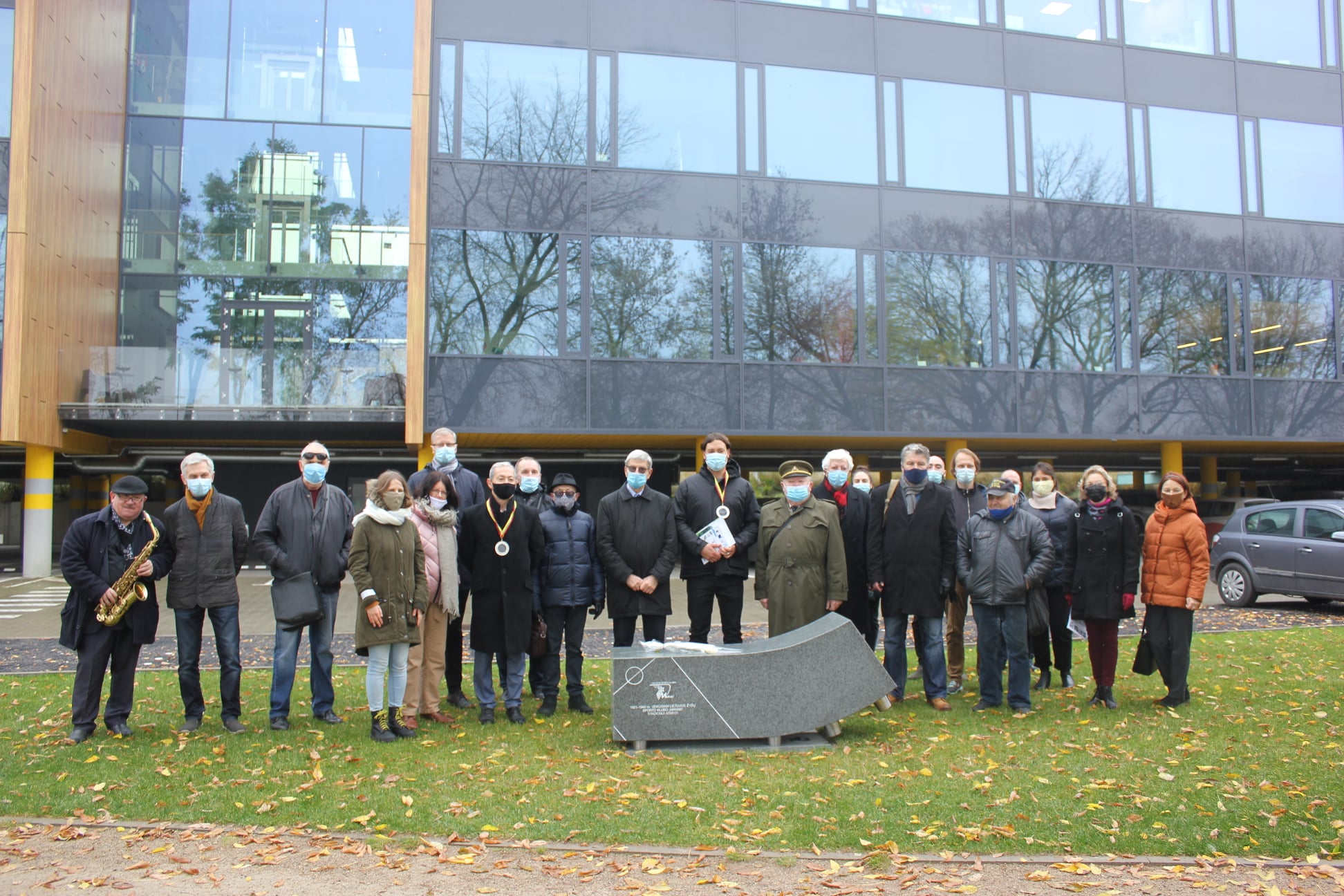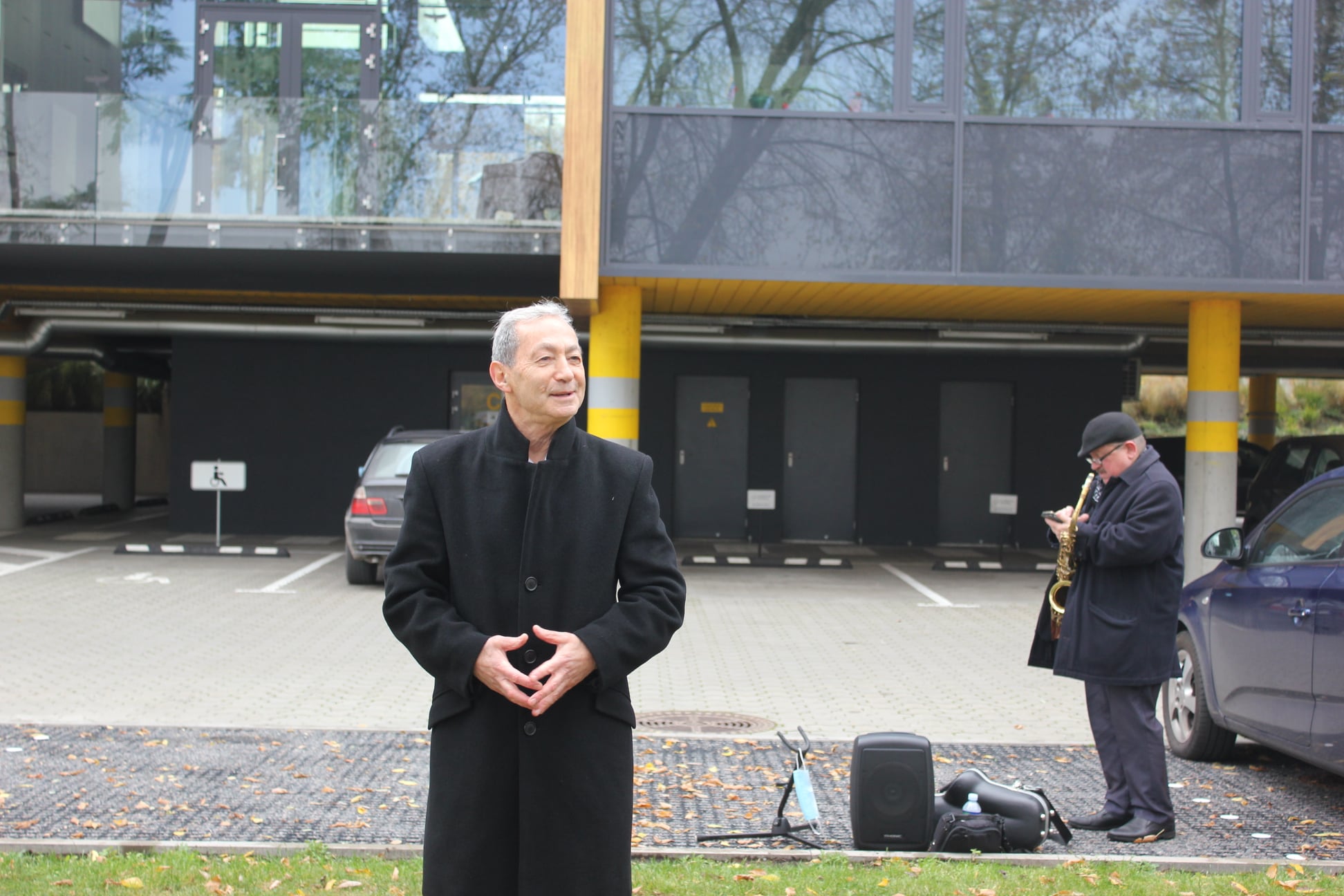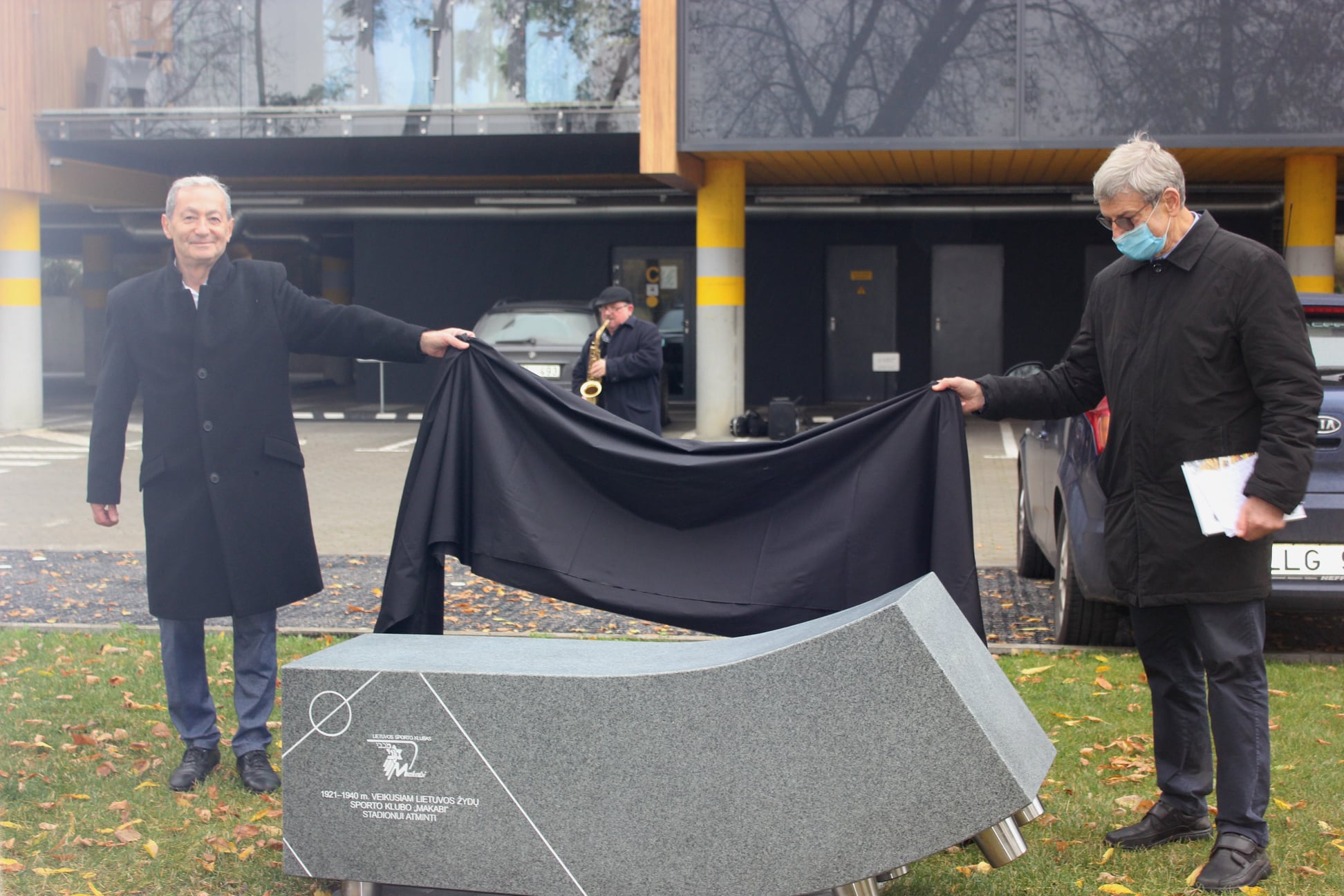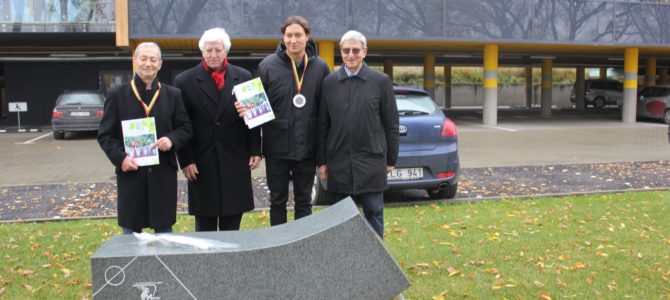Photo: A sculpture commemorating the Makabi Stadium in Kaunas. Photographs by Laimutis Brundza
A sculpture by Gediminas Pašvenskas will mark the spot where the Makabi Stadium was opened 100 years on Jonavos street in Kaunas. When you drive along the street today, you’d likely never think there was a soccer stadium here. Opened on October 19, 1920, by the Makabi Jewish athletics and gymnastics association, exactly one year later it was outfitted as a soccer stadium.
“The first stadium was in Ąžuolynas. The second was here, actually, a little bit away from this location where we’re standing now. There was a third in Panemunė, but back then Panemunė wasn’t part of the city of Kaunas, it belonged to the Kaunas district,” Kaunas Jewish Community chairman Gercas Žakas, who used to play soccer there, said at the ceremony to unveil the new sculpture.
The arena operated from 1920 to 1940 and held 2,500 people. It had a running track and other facilities as well. “Everything was fine if the ball didn’t go into the Neris River, at which point all the spectators would disperse. They didn’t wait the ten minutes it took to get the ball out of the water,” Žakas recalled.
Lithuanian Makabi president Semionas Finkelšteinas shared his own memories, not just balls going into the water, but water coming into the stadium. In 1931 the river overflowed and covered the entire field.
Many matches were held there. In 1922 the first Lithuanian soccer championship was held in the stadium. In 1931 the first international match between Lithuanian and Romanian competitors took place, and Lithuania lost, 4:2.
“Semionas Finkelšteinas very correctly observes that it wasn’t just Makabi but Lithuanian national team matches which took place in this stadium. Meaning the stadium was open to others outside of [Makabi] club members,” Kaunas Jewish Community chairman Žakas said, adding that most of the club’s members were murdered in the Holocaust.
Sculptor Gediminas Pašvenskas said the monument was intended to recall the shape of a soccer player’s shoe at the moment the player begins to run.





